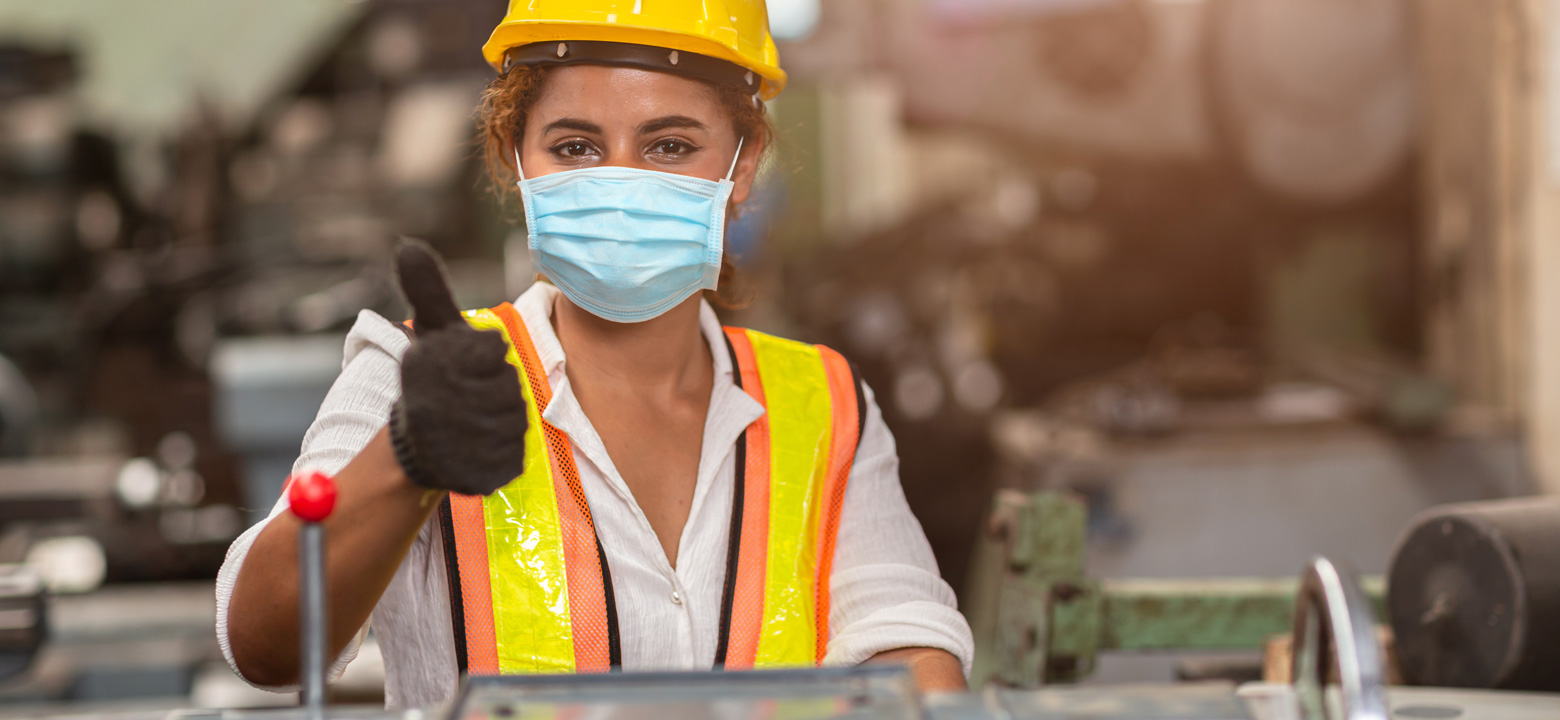
While looking at the effects of COVID-19 on the manufacturing sector, it's important to remember that the pandemic didn't create new challenges, it exposed weaknesses that already existed. Even so, the way businesses operate is fundamentally changed now. As manufacturers re-open and resume production, they need to balance productivity with guidelines intended to ensure worker safety and business continuity.
If there's one thing COVID-19 has exposed, it's the importance of a safe, healthy workforce. All of the efficiency, robust supply chains, and operational agility in the world won't help if there isn't anyone healthy enough to work. The pandemic has forced manufacturers to create in-depth guidelines on employee hygiene and safety, and enforce them stringently.
COVID-19 has also highlighted the importance of remote interaction. The ability to continue operations from a distance can mean the difference between a business that's able to continue functioning during stay-at-home orders, and one that's forced to shut down.
Changes in production have led some manufacturers to adopt new technology to help them reimagine their workfloors. This allows business leaders to see exactly how their plants operate, and reconfigure their layouts for maximum efficiency. For manufacturers that have had to pivot to producing other goods, these tools can help them visualize how to rework their current assembly lines for new products.
For all of the upheaval that the novel coronavirus has triggered, there are some specific areas that are seeing the biggest changes:
Most of the pandemic-related changes to manufacturing directly affect the workforce. Employers are providing their workers with the tools they need to stay healthy, in the form of hygiene stations, visual reminders, and even pre-shift briefings on the company's sickness prevention guidelines.
Considering how efficient and cost-effective remote interaction can be, it's unlikely to be phased out even when companies are able to fully open—moving customer interactions entirely online doesn't just make it easier to maintain social distancing, it makes it easier to meet more customers' needs in a shorter period of time. Experts predict that this may make the adoption of 5G and smart technology more widespread, as well as increase demand for cybersecurity experts. While working remotely brings added risk and expense in the form of data security and software, it also lowers employees' health and safety risks, and decreases expenses related to HVAC, lighting, and stocking and cleaning restrooms.
One of the hardest hit aspects manufacturing was the supply chain. Many businesses source parts and materials overseas, and found themselves grappling with what to do when their primary supplier ended up being a COVID-19 hotspot. Others were the suppliers for clients in hotspots, and had to struggle with a steep decrease in demand for their products. In the future, it's likely that more and more manufacturers will work to source supplies locally, and attempt to ensure some supply chain redundancy. If a manufacturer is still operational, it's likely their local suppliers are, too. If they aren't, having a back up plan will keep things running smoothly.
The shortage of ventilators and personal protective equipment in hospitals across the U.S. saw everything from automotive manufacturers to textile workers rushing to fill the demand. This put a lot of strain on these businesses, from getting the IP rights to the designs they were working with, to sourcing necessary raw materials, to reconfiguring assembly lines and training employees. Going forward, this kind of agility is likely to be a necessity. COVID-19 hasn't just impacted manufacturing, it's changed consumer behavior and market dynamics as well. That means that businesses need to be ready to respond as quickly and effectively as possible.
If something isn't broken, some companies are very slow to fix it. As a result, a number of manufacturers are being left in the dust as late adopters of modern technology. Digitalization helps with flexibility and operational agility—whether employees are working remotely, or on site. Siemens’ SIMATIC Real Time Locating Systems let employers monitor distances between employees, making it easy to maintain safe distancing. The company has also created a means for manufacturers to model their work spaces, optimize layouts, simulate worker behavior, and effectively tweak their production lines.
Digitalization also helps manufacturers secure their revenue streams by allowing for greater flexibility. For example, integrating design libraries, 3D printing equipment, suppliers, and customers lets operations be demand-driven to an unprecedented degree. These systems can even be linked with existing technology for planning, scheduling, and inventory, for a seamless, streamlined flow.
While COVID-19 has shaped the future of manufacturing, business owners are responding by changing the way they handle their employees, supply chains, operations, and new technology. By emphasizing employee hygiene, enforcing social distancing, sourcing supplies locally, embracing operational agility, and adopting digitalization, they can future-proof their operations and maintain business continuity through virtually any disaster.